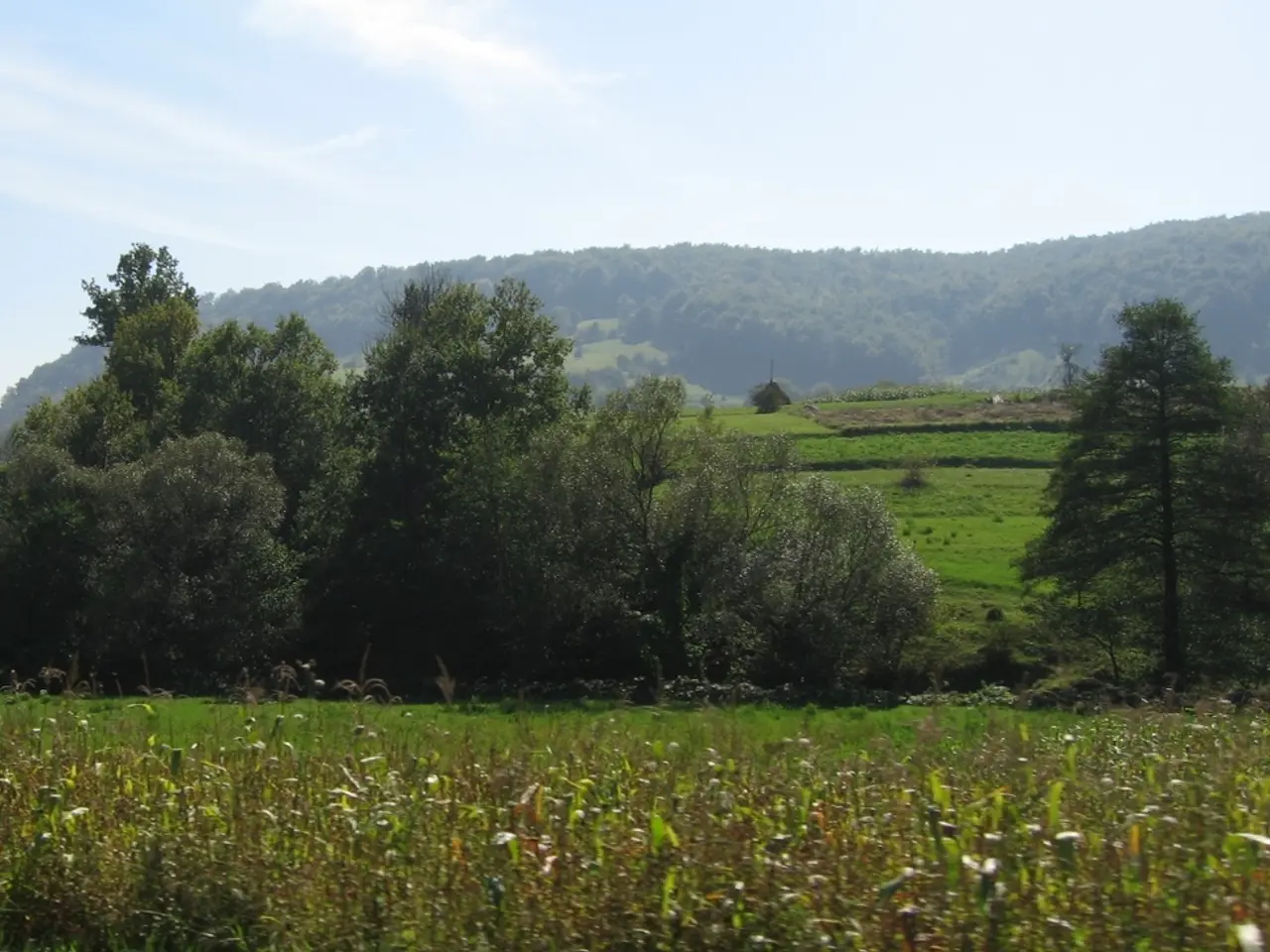Effortless Enhancements for a Timeless Garden, Preserving the Natural Appearance
In the realm of gardening, a shift towards a more natural and sustainable approach is gaining popularity. Here are some ideas to help you transform your yard or garden into a green space that blends effortlessly with its surroundings.
A stumpery, a unique garden feature, uses tree stumps as bases for growing plants and native ecosystems, providing shelter and foraging for wildlife. These can be created from tree stumps left in place after removal or loss due to damage or storms.
Chaos gardening, a design trend, allows plants to grow where and how they want, giving a more natural look and requiring less work compared to formal or traditional spaces. This approach encourages a more relaxed and organic garden.
Building a natural swimming pool is an alternative to a traditional swimming pool. These pools, which resemble ponds and blend with the landscape, use plants in the water and around the edges to keep the water clean and create a natural, native landscape.
Utilising native plant species is key to creating a resilient and low-maintenance garden. These plants are well-adapted to local conditions and include a variety of trees, shrubs, and perennials. Examples of natives include wild ginger, green-and-gold, and dwarf cinquefoil.
Incorporating drought-tolerant plants such as lavender, sage, rosemary, and aloe reduces water needs and upkeep. A xeriscape garden, which minimises irrigation through the use of drought-resistant plants and efficient soil coverage, is another way to create a low-maintenance garden.
Creating berms—rounded mounds of soil covered with mulch or rock—adds height, interest, and improves water retention around plants. Natural hardscape elements like stone, wood, or gravel pathways and garden edges complement plantings and define spaces organically.
An herb spiral made from stone maximises growing space and creates microclimates for various herbs, adding both practicality and visual appeal. Rock landscaping features like a stone-lined pond or a safe river-rock fire pit area blend functionality and nature-inspired beauty.
When it comes to creating a natural-looking garden, perennial gardens usually look more natural than those with annuals. Choose native perennials for the most natural look and arrange them organically with a mix of colours, textures, and sizes.
A prairie lawn, incorporating natives like wild grasses and wildflowers, supports native wildlife, including pollinators. It's important to check with your homeowner's association for any rules regarding lawns before beginning a major transformation like converting to a prairie lawn.
Leaving some corners of a garden "littered" with natural materials, like sticks, messy shrubs, and leaf litter, supports wildlife. Rock landscaping can be used for steps, borders, and edges to create more natural spaces in the garden.
In conclusion, natural landscape design is an art and a skill that allows the creation of a yard or garden that looks natural, unfussy, and relaxed. By embracing native, drought-tolerant, and perennial plants combined with natural materials and forms, we can create green spaces that feel effortless, sustainable, and harmoniously integrated with their surroundings.




